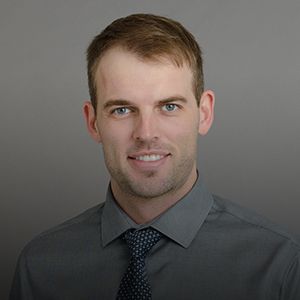
What is Myopia and Why Does It Occur?
The latest in treating and managing a leading global epidemic.
Myopia is another word for being near-sighted, and also refers to having a longer-than-average length of the eye. People who are near-sighted see an object more clearly as it is brought nearer to them — objects near to the viewer are clearer, and objects further away are blurred. Myopia can be classified based on its severity (i.e. low vs. high myopia). Low myopia refers to anyone who sees most clearly from 6.5 feet out or closer. In contrast, high myopia generally constitutes those who can only see clearly from around 4 inches or closer.1
It’s normal for the length of the eye to increase as children grow. Young children are normally far-sighted (they can see things that are far away clearly). When we focus, we flex a muscle in our eye that changes the shape of the lens within the eye and thus changes the focus. This is why we are able to shift our gaze between near and far objects. It’s a bit of a simplification, but this accommodation also causes our eyes to grow In length. So It’s a natural and normal process for children who are far-sighted when they are young to “grow out of It” as they develop.
In our modern world, though, children accommodate much more then their great-grandparents did. Children today spend much more time Indoors, reading, using tablets and other near activities, and this contributes to the Increasing prevalence of myopia throughout the world. Near-sightedness is on the rise! It has been predicted that one-half of the world’s population will be living with myopia by 2050!2
Why Should I Consider Myopia Management For My Child?
People with high myopia have a higher risk of certain eye diseases. This is because people who are near-sighted have longer-than-average length from the front of the eye to the back of the eye. Eyes that are longer (the scientific term for this is “axial length”) have a higher risk of retinal detachments, open-angle glaucoma, an irregular shape to the back wall of the eye (called “staphyloma”), and abnormal blood vessel growth in the retina (a.k.a. Myopic Macular Degeneration).4 Unfortunately, these diseases can lead to permanent loss of vision.
Children who are nearsighted or have parents who are nearsighted are at risk of developing high-myopia. For every child, we recommend getting two hours of time outside daily, and taking breaks when doing prolonged near work. Encourage your kids to follow the 20/20 guideline when reading or doing other close tasks: every 20 minutes, look off into the distance for 20 seconds to relax the accommodation of the eyes. Additionally, there are now good treatments to help slow the progression of myopia for at-risk children.
What treatments are out there to help prevent high myopia?
There are four treatment options that are the most widely used to help prevent high myopia.
Soft contact lenses
MiSight® daily disposable lenses are the only FDA-approved soft contact lenses available for myopia management. However, there are other types of soft contact lenses that can help prevent axial elongation that have been used effectively “off-label.” If your child Is mature motivated to wear contacts and mature enough to keep them clean and cared for, this may be a great option.
Atropine therapy
Atropine is an eye drop originally used to dilate the eye and relaxing accommodation (that muscle we use to change the eye’s focus point). Researchers have discovered that In tiny concentrations (0.05% approximately 1000x weaker than the strength used for dilation traditionally) atropine slows the progression of myopia5
Orthokeratology
Orthokeratology refers to wearing a rigid gas-permeable hard contact lens (RGP) only at night while sleeping and removing the lens each morning. Due to the effects that the hard lens has on temporarily reshaping the cornea (the front surface of the eye), patients often do not need to wear correction (i.e. glasses or soft contact lenses) throughout the day. While not FDA approved, this treatment has shown the most research and corroborative evidence in preventing myopic axial length progression,6 but also carries a risk of infection, especially if not fit carefully by your doctor and meticulously cleaned and cared for. We do not offer orthokeratology at Arbor Eyecare, but if you feel this is the best choice for your child, we are happy to provide a recommendation of a colleague experienced with orthokeratology.
Spectacle correction
The most common means for correcting someone’s vision, spectacles (a.k.a. Glasses) can be a simple way to help prevent myopic progression. In the past, the use of bifocals and progressive lenses have been used as a type of treatment. However, recent studies show that a more effective treatment is peripheral defocus spectacle lenses.7,8 Unfortunately at this time, these peripheral defocus lenses are only available outside of the United States (but we anticipate they’ll be approved here within the next 1-2 years!).
Which is best for my child?
This is a very common question without one right answer. Current research shows that many of the treatments are similar in their effectivity. All options discussed previously have shown to decrease axial length progression by 50%.7,9-11 As of late, studies have shown that MiSight® soft contact lenses, Atropine 0.05%, Orthokeratology, and peripheral defocus spectacle lenses are most effective in comparison with other means. Because of this, the answer to this question really lies in lifestyle choices and age of the patient.
How do I Get My Child Started With Myopia Management?
The first step is a consultation with Dr Chou or Dr. Wang at Arbor Eyecare. Give us a call today to set up a consultation.

Dr. Tyler Nelson
1. Rose K, Harper R, Tromans C, et al. Quality of life in myopia. Br J Ophthalmol. 2000; 84: 1031–1034.
2. Holden BA, Fricke TR, Wilson DA, et al. Global prevalence of myopia and high myopia and temporal trends from 2000 through 2050. Ophthalmology. 2016;123(5):1036-1042.
3. Morgan I, Rose K. How genetic is school myopia? Prog Retin Eye Res. 2005; 24: 1–38
4. Annechien E. G. Haarman, Clair A. Enthoven, J. Willem L. Tideman, Milly S. Tedja, Virginie J. M. Verhoeven, Caroline C. W. Klaver; The Complications of Myopia: A Review and Meta-Analysis. Invest. Ophthalmol. Vis. Sci. 2020;61(4):49.
5. Yam, J. C., Zhang, X. J., Zhang, Y., Wang, Y. M., Tang, S. M., Li, F. F., Kam, K. W., Ko, S. T., Yip, B. H. K., Young, A. L., Tham, C. C., Chen, L. J., & Pang, C. P. (2022). Three-year clinical trial of low-concentration atropine for myopia progression (LAMP) study: Continued versus washout. Ophthalmology, 129(3), 308–321. https://doi.org/10.1016/j.ophtha.2021.10.002
6. Sun, Y., Xu, F., Zhang, T., Liu, M., Wang, D., Chen, Y., & Liu, Q. (2015). Orthokeratology to control myopia progression: A meta-analysis. PLOS ONE, 10(4).
7. Lam CSY, Tang WC, Tse DY, Lee RPK, Chun RKM, Hasegawa K, Qi H, Hatanaka T, To CH. Defocus Incorporated Multiple Segments (DIMS) spectacle lenses slow myopia progression: a 2-year randomised clinical trial. Br J Ophthalmol. 2020;104:363-368.
8. Bao J, Huang Y, Li X, Yang A, Zhou F, Wu J, Wang C, Li Y, Lim EW, Spiegel DP, Drobe B, Chen H. Spectacle Lenses With Aspherical Lenslets for Myopia Control vs Single-Vision Spectacle Lenses: A Randomized Clinical Trial. JAMA Ophthalmol. 2022 May 1;140(5):472-478.
9. Carlà MM, Boselli F, Giannuzzi F, Gambini G, Caporossi T, De Vico U, Savastano A, Baldascino A, Rizzo C, Kilian R, Rizzo S. Overview on Defocus Incorporated Multiple Segments Lenses: A Novel Perspective in Myopia Progression Management. Vision (Basel). 2022 Apr 2;6(2):20. doi: 10.3390/vision6020020. PMID: 35466272; PMCID: PMC9036268.
10. Bao J, Huang Y, Li X, Yang A, Zhou F, Wu J, Wang C, Li Y, Lim EW, Spiegel DP, Drobe B, Chen H. Spectacle Lenses With Aspherical Lenslets for Myopia Control vs Single-Vision Spectacle Lenses: A Randomized Clinical Trial. JAMA Ophthalmol. 2022 May 1;140(5):472-478.
11. Chamberlain P, Peixoto-de-Matos SC, Logan NS, Ngo C, Jones D, Young G. A 3-year Randomized Clinical Trial of MiSight Lenses for Myopia Control. Optom Vis Sci. 2019;96(8):556-567











